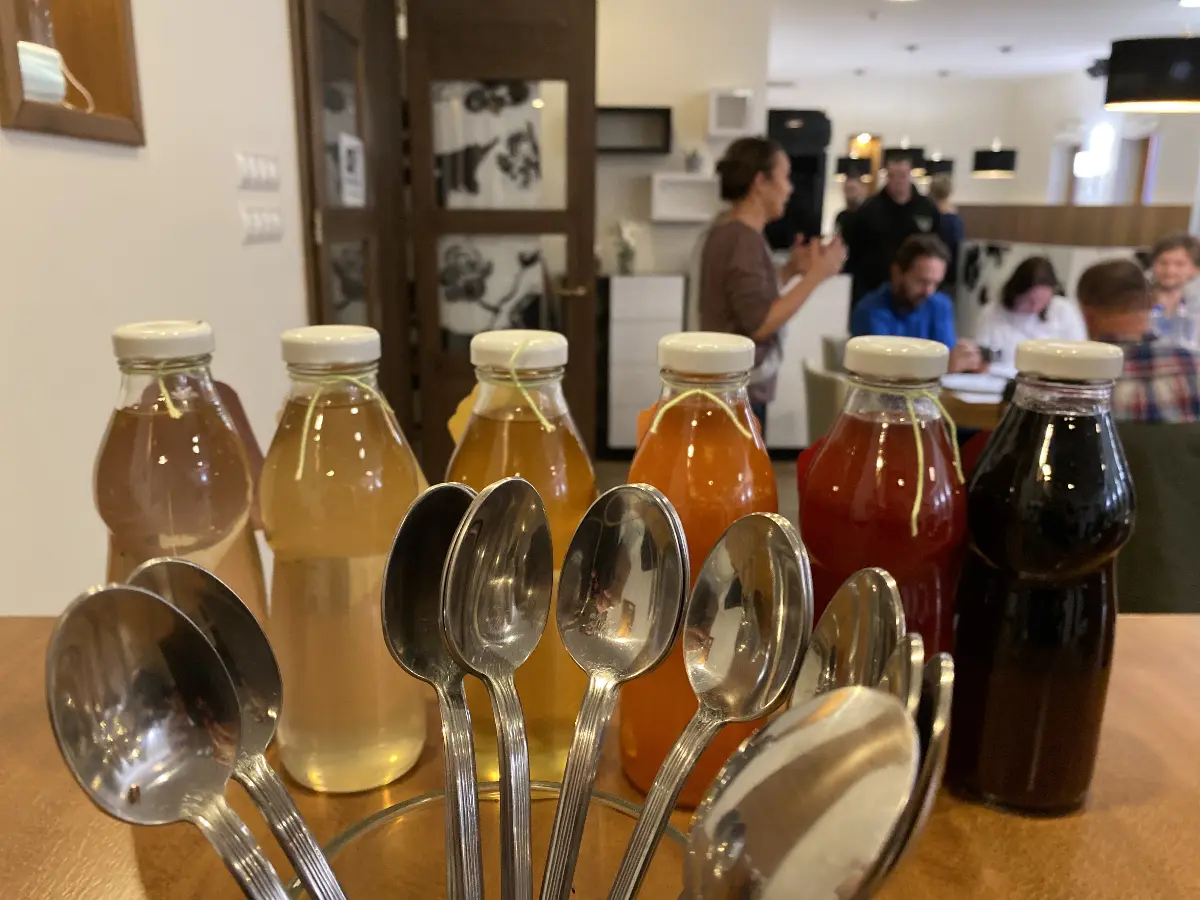
Helyszín címkék:
The Apricot from Gönc
Méhész Zsuzsa
So special
Goldrich, Hargrand, Bergerich. These are not names of Dutch banker families, but types of apricot. There are some others that sound more familiar to Hungarians: Pannónia, Budapest, Cegléd giant. We could add more names to the list, however the eyes of hardcore jam makers are filmed over at the mention of the apricot of Gönc. Is it only a legend that the best jam and the best pálinka are made of this apricot? Why is this fruit so special?
Roots
We think it’s a Hungarian specialty, a Hungarikum, however apricot arrived in Hungary from the East (just like many other fruits). It spread in the 15th century, its cultivation is related to the Ottomans. In Anatolia, we can see huge apricot orchards to this day, around Amasya roofs are completely covered by fruit drying in the sun. However, the origins are not Turkish, although the Hungarian word “kajszi” is Turkish origin. Originally, apricots come from China, where they have been cultivated for five thousand years. Today it is grown in many parts of the word, but originally it spread along the Silk Road, and with the passing of time it adapted to local conditions, soil and climate. In the mystical Hunza Valley of Pakistan, where it is considered the key to long life, there are several people who live to be a hundred, and claim that this is possible due to the apricot. It has a cult in Armenia as well. In ancient times, it was a dish for lucullus feasts, its Latin name (prunus persica, thus Persian apple) also bringing to mind the East. Our apricots can be divided into two large groups: the Rose variety is smaller, its flesh is harder, it is more resistant to transportation and storage, in turn its taste is not so sweet and complex. Hungarian apricots have a deeper colour and they are bigger, but at the same time they are very sensitive. The Gönc apricot is part of the latter team. No wonder that green grocers prefer the former, while jam makers prefer the latter.

Why is the apricot from Gönc?
The answer is to be found in the production area. However, the apricot of Gönc is not only fruit from this village in Abaúj with barely two thousand inhabitants: it may come from 42 settlements, which are precisely named by the protection of origin standards. The soil, the climatic conditions and the number of hours of sunshine matter more than we think. The production area of the Gönc apricot is bounded by the hills of Zemplén on one side and River Hernád on the other, from the Slovakian Border to Miskolc. Its largest coherent orchards are located to the south of Gönc, in Boldogkőváralja, where the fresh green patch of apricot orchards even covers a part of the castle hill. Mónika Czakó is one of the farmers who decided to work with the hypersensitive apricot of Gönc instead of the more marketable, less sensitive varieties.
"Because this is ours”

Mónika is the owner of ‘BESTILLO Pálinkaház’ (Bestillo Palinka House). She was born in Boldogkőváralja and she spent her childhood among the apricot trees, since apricot here is like grapes in Bordeaux. They must be. She and her husband Gábor Czakó moved back to Hungary aftera short detour to New Zealand. They cultivate and process Gönc apricot, and in addition they undertook promoting the fruit. They stick to tradition, since Gönc apricot is their fruit. In spite of this, there was a period when varieties easier to grow almost pushed the traditional one out of the market. The Czakós make a characteristic distillate in their pálinka distillery from healthy, edible quality apricots: this is their flagship, the pálinka most characteristic of the production area. They not only grow and process it, Gönc apricot became their passion: they want to set an example to locals that it’s worth dealing with the variety requiring more devotion, and to stay in their village. Their pálinka distillery is located on the outskirts of Boldogkőváralja, in an amazing place, surrounded by Zemplén Mountains. The Czakós are willing to receive visitors. They walk them through the production process, and finally the guests can taste the great pálinka and organic jams made at BESTILLO









